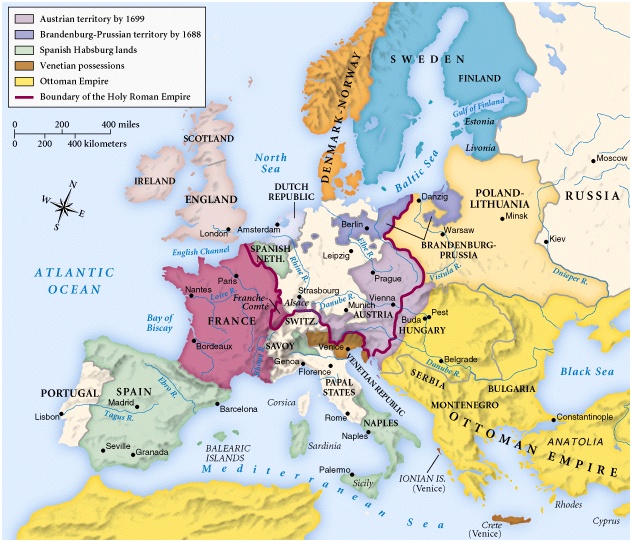
Europe in 1500
Looking at a map of Europe in 1500, it is easy to imagine that the outlines of modern nation-states, or at least a few of them, were somehow destined to take the shapes familiar in the twenty-first century. But this impression is misleading: the idea of the nation as a kind of organism with an economy and distinctive political and legal structures was only beginning to form; the impact of central institutions on everyday life was still slight; most states were culturally and linguistically diverse; in most of Europe, zones of judicial authority rarely corresponded exactly with administrative districts or the boundaries of ecclesiastical governance. Broadly speaking, the most consolidated monarchies were situated on the Atlantic. The political landscape of Italy was dominated by wealthy, powerful, and largely independent city-states, most notably the Republic of Venice. In central Europe a vast federation—the Holy Roman Empire—was acquiring legal and political structures that would remain with it through the eighteenth century. In this map, its boundary is shown by a thick maroon line. Eastern Europe was characterized by sprawling monarchies, some of them centralized and expanding—the Ottoman Empire—others more loosely organized, such as Poland-Lithuania. Two major shifts were about to take place: the first occurred in 1519, when the Spanish kingdoms of Castile and Aragon, the Low Countries (Flanders and the Netherlands), and Austria fell to the heir of the Habsburg dynasty, Charles V (1519-1556); in 1526 the dynasty acquired Bohemia, Silesia, and Hungary as well. The second shift involved Turkish expansion: under stultans Selim I (1512-1520) and Suleiman I (1520-1566), Ottoman power enveloped Wallachia, almost all of Hungary, the Levant (Syria and Palestine), and Egypt.

